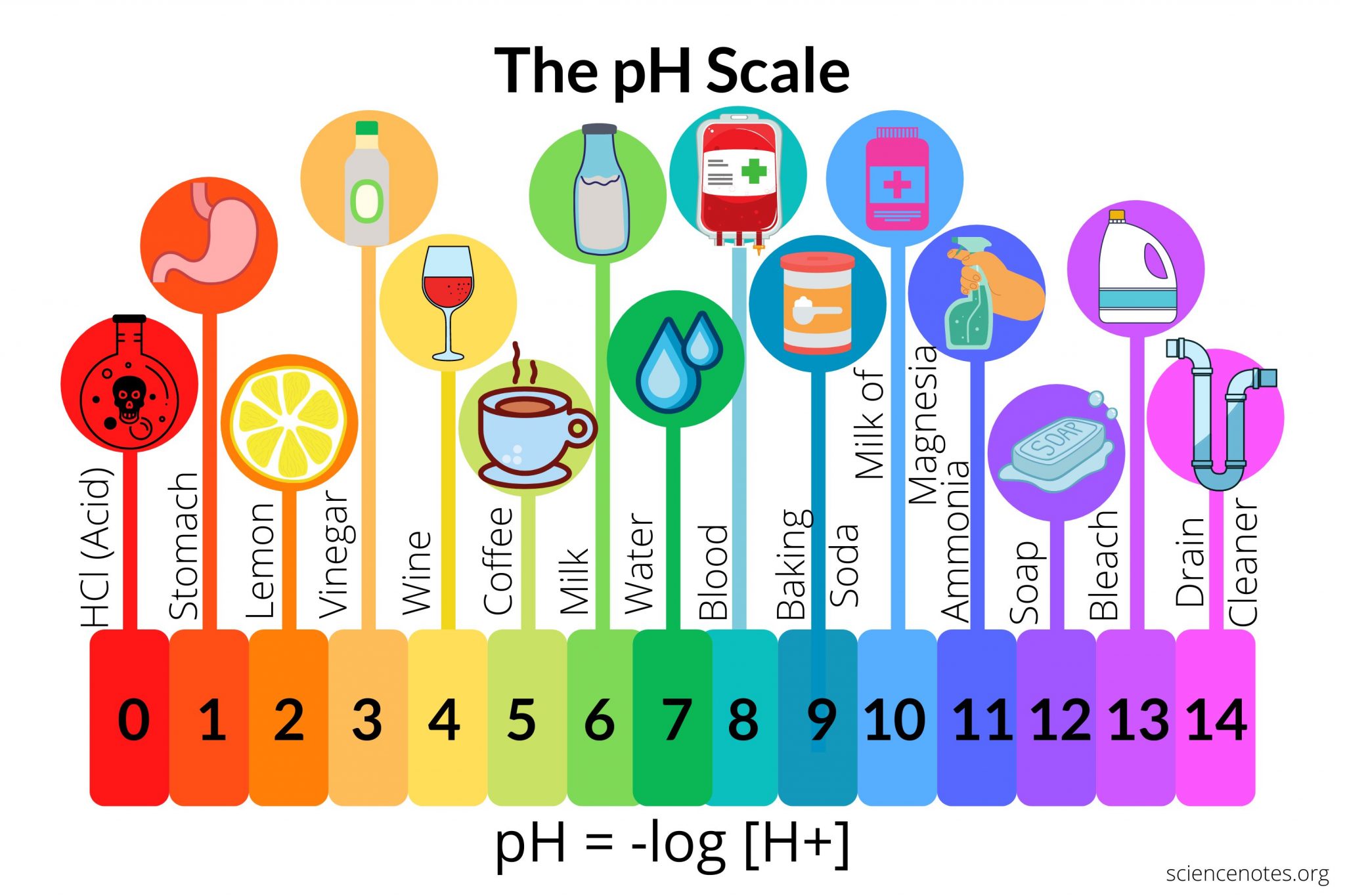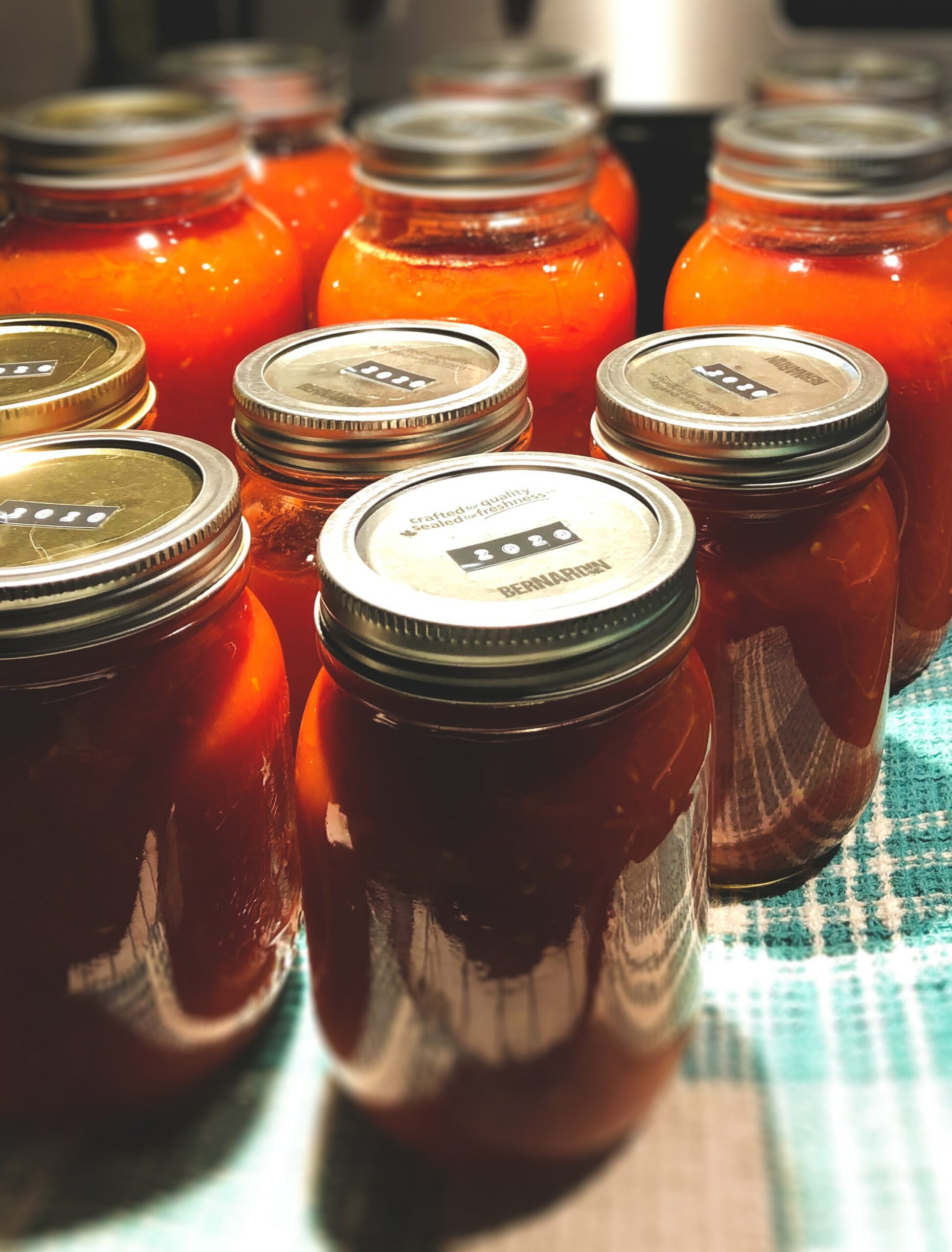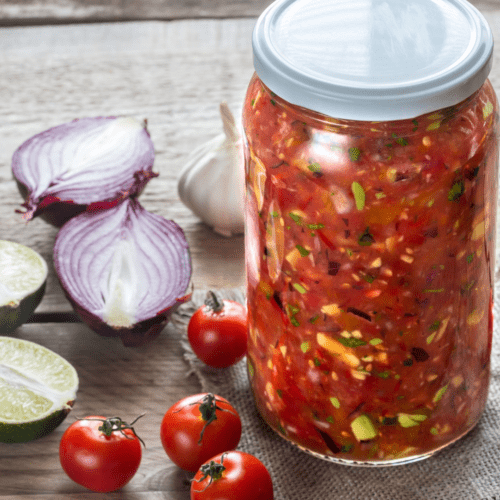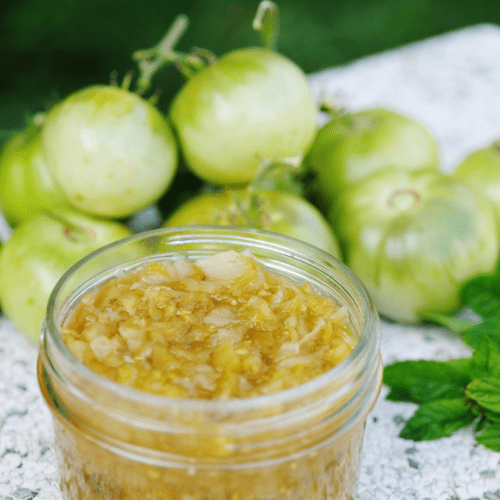With the bounty of produce coming out of our gardens or at the farmers markets, this is the best time to take advantage of the peak harvest season to preserve summer flavors to brighten up meals during the colder months.
There are many food preservation techniques like drying, vinegar pickling, fermentation and canning. In this article, we’ll tackle canning techniques focusing on water-bath canning and briefly mentioning pressure canning as a comparison.
Canning is a fairly recent preservation technique in comparison with fermentation, salting or drying/dehydrating. It came as a product of pasteurization ideas to eradicate all possible microorganisms from food and allowing the cans/jars to be shelf stable at room temperature for long periods of time. Unfortunately, the process created some unexpected issues with Botulism caused by the clostridium botulinum, a bacteria that thrives in anaerobic environments (no oxygen) low in acidity. Learn more about it here.
We’ll focus on water bath canning using foods high in acid like fruit jams, salsas, sauces, and pickles. We won’t touch on pressure canning, which is used for foods low in acidity, like vegetables, soups or beans, among others, and which require more careful treatment and much higher temperatures to kill all possible pathogens.


Guidelines for Water Bath Canning
- Acidity: Food acidity levels at or below 4.6% are ideal for water bath canning. Therefore, when preparing recipes it is vital to stick to the guidelines until you feel comfortable enough to make changes that won’t compromise the ratios of acidity and, in the case of jams and jellies, sweetness.
- Recipes: Use recipes from reputable sources only and make sure to follow them to prevent food safety issues. The National Center for Home Food Preservation offers detailed guidelines for different types of foods and different preservation techniques, plus a good base of recipes to get you started.
- High altitude adjustments: The processing time of the jars in water bath canning increases with altitude. Most recipes require 10 extra minutes of processing time in a water bath at our Denver altitude.
- Equipment: A large pot with an internal rack to keep the jars from up from the base of the pot. Canning tongs, canning funnel, ladle, glass jars and lids.
- Sterilizing the jars: When canning it is important to sterilize the jars properly by following the recipe’s guidelines. Add jars to boiling water and boil them for 10 minutes. No need to boil the lids and bands, simply add them to hot water just before you need them. Follow the recommended time for each recipe you find online or in books. Do not skip this step.
Tomatoes
Canning tomatoes is one of the best ways to preserve the summer bounty. The basic guidelines include adding acid directly to the jars before processing, which accounts for low acidity in newer tomato varieties. Do not skip the vinegar as it protects the tomatoes from possible botulism contamination.
Canned Tomatoes
-Tomatoes
-Salt
-Vinegar at 5% acidity or lemon juice
-Pint size glass Jars
- Peel and cut the tomatoes into quarters and put them in a large pot. Bring them to a boil over medium-high heat, stirring. Boil for five minutes.
- Fill clean canning jars with the hot tomatoes and add 2 tbsp vinegar or 1 tbsp lemon juice and 1 tsp salt per jar.
- Process in a boiling water bath for 45 minutes. Take the jars out and let cool at room temperature before storing.


Basic Salsa
You can spice up this basic salsa recipe with your preferred hot peppers, cilantro and any spices you might like.
- 3 quarts tomatoes, skinned, cored and chopped
- 2 quarts chili peppers, chopped
- 2 ½ cups onions, chopped
- 1 cup (5%) vinegar
- 3 tsp salt
- ½ tsp pepper
Combine all ingredients in a large pot, heat to boiling, and then simmer for 10 minutes, stirring frequently so it doesn’t scorch.
Fill pint jars with the hot salsa, leaving ⅛-inch headspace. Process pints in a boiling water bath for 20 minutes. (time has been adjusted for altitude to up to 6,000 ft).
Green Tomato Chutney
6 cups finely chopped green tomatoes
1 large, tart apple, peeled, cored, and finely chopped
2 cups light brown sugar
2 cups apple cider vinegar
1 1/2 cups raisins
1 organic lemon, sliced into thin slivers (include peels, discard seeds)
1/4 cup peeled and minced fresh ginger root
1 clove garlic, peeled and minced
1-2 chile peppers, minced
1/2 teaspoon salt
1/4 teaspoon ground allspice
1/4 teaspoon ground coriander seeds
Pinch of ground cloves
– Put all of the ingredients in a large, non-reactive, pot over medium-high heat
– Boil, stirring often, until the green tomatoes and the apples are very soft, the chutney is thick enough when a wooden spoon dragged across the pot bottom leaves a trail that doesn’t fill within a few seconds
– Process in half-pint jars in a boiling water bath for 35 minutes


